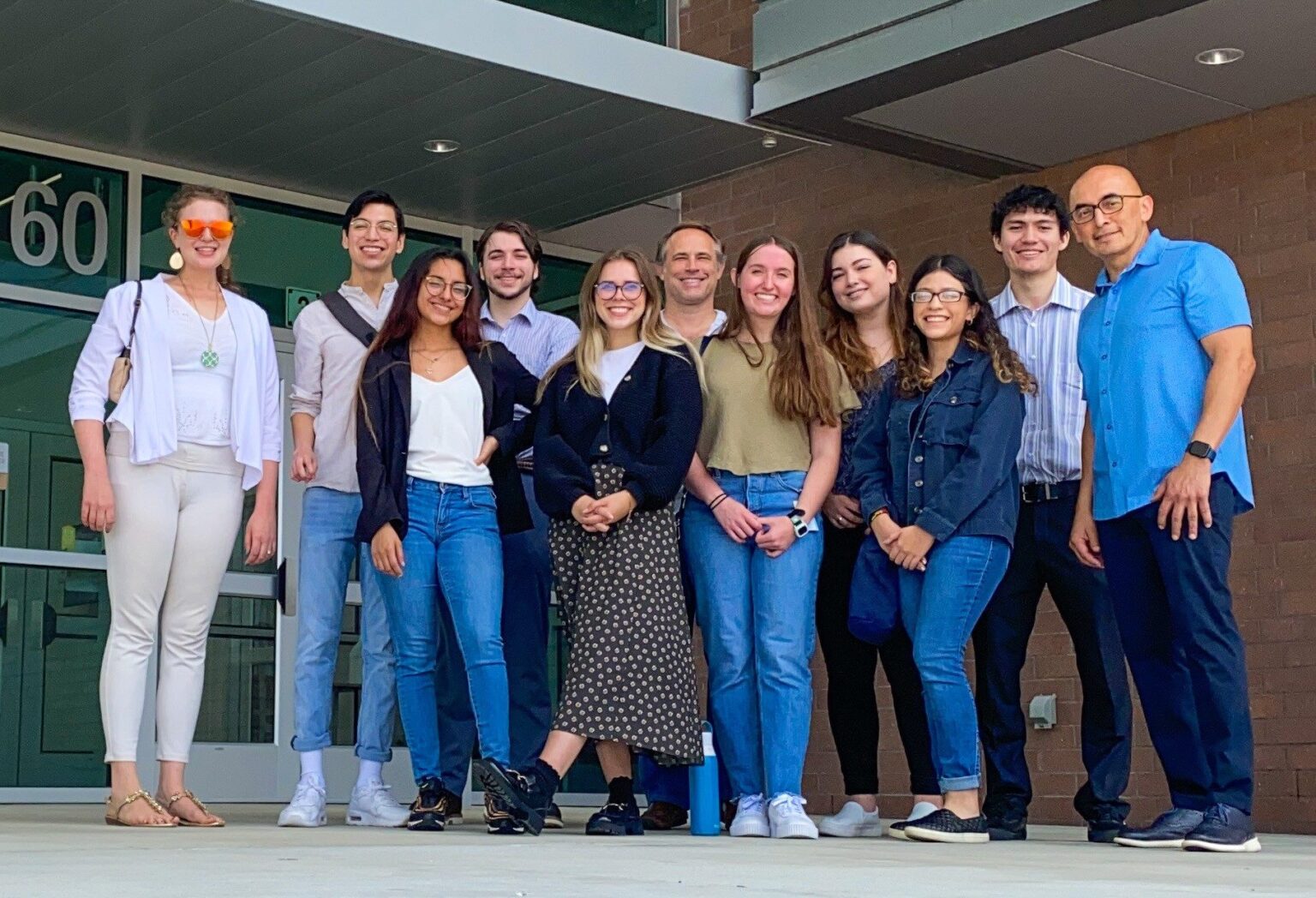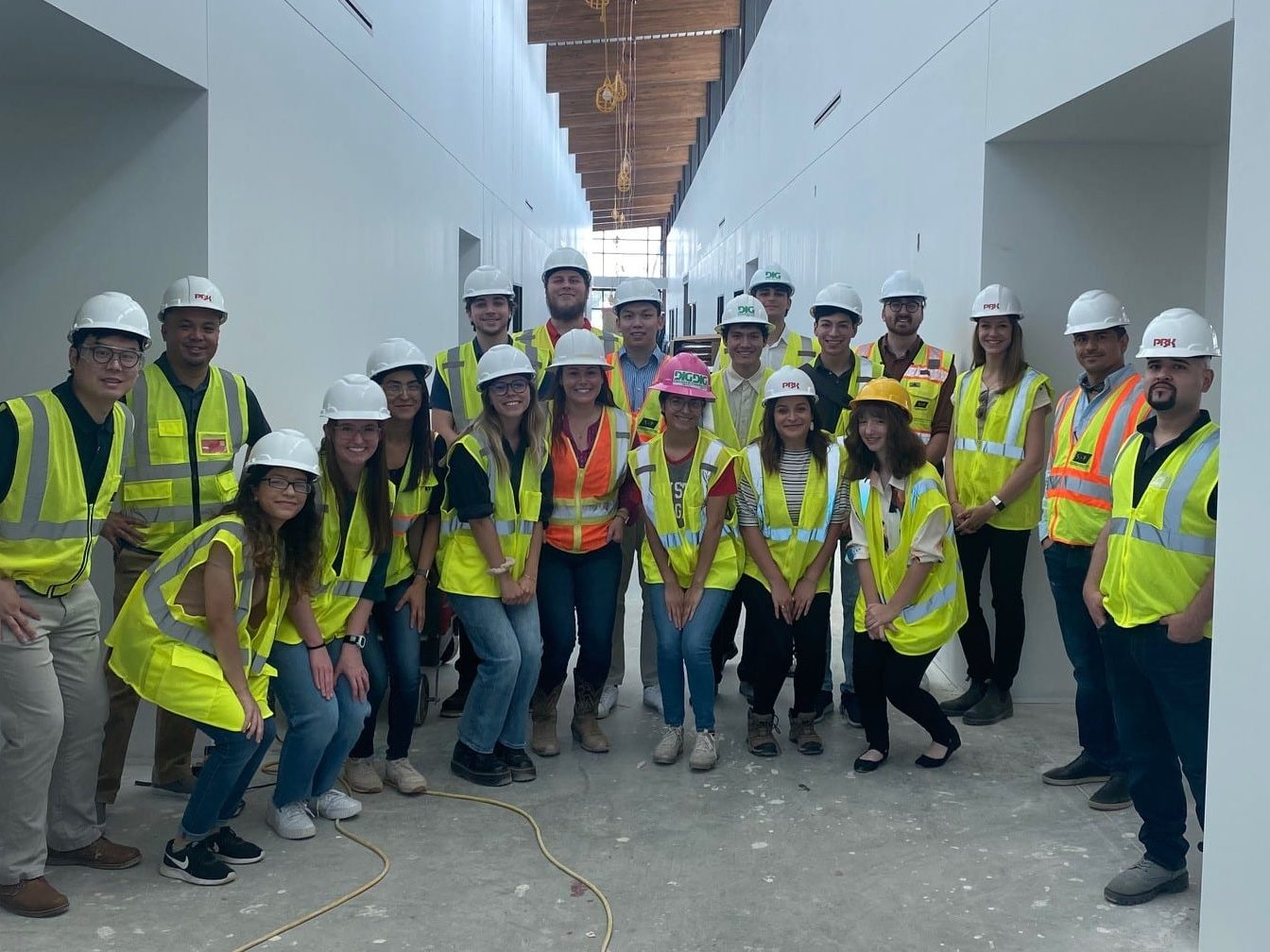Announcements
Summer Internship at PBK

Every year PBK offers a summer internship program to college students pursuing a career in the architectural industry. The summer internship focuses on the process of moving through the architectural phases: schematic design (SD), design development (DD), construction documents (CD) and construction administration (CA). PBK Intern Ben from the University of Houston shared “something important I learned is that going from SD to CA isn’t exactly a linear process. Typically, in school we fast track through these processes, but I feel like that takes out some of the most important steps.”
The interns spend the summer learning to create construction drawings through Revit. “During the first month as an intern at PBK, I gained so much experience in Revit and AutoCAD,” says Ashlon, PBK intern from Texas A&M University. “When I first started the internship, I didn’t have that much experience using the programs but working on multiple projects has made me proficient in both.”
As the summer progresses the interns participate in site walks, reviewing drawings and materials, and ensuring their designs are coming to life.
While the interns are busy learning core architectural skills and working on numerous projects, they are also building soft skills and receiving advice from the architects on their teams. Logan, PBK intern from Texas A&M University says, “there are a lot of good opportunities to learn whether we are in the office, at a job site, or just a team lunch.”
PBK’s internship program helps guide students towards their future careers as architects by giving them hands on experience in the industry. Stephanie, a PBK Intern from the University of Houston shared, “architecture school teaches you more about conceptual design rather than real life situations and issues and how to navigate them. I also learned there are various paths you can take once you graduate with your architecture degree. The internship has helped me narrow down which path I want to take after graduation.”

Q&A with the PBK Interns:
What’s one thing that you’ve learned through your internship with PBK?
“Something important that I learned is that going from SD to CA isn’t exactly a linear process. Typically, in school we fast track through these processes, but I feel like that takes out some of the most important steps. Being a part of this internship program allowed me to see the challenges of the design process but also the very real details of them.” – Ben Gonzales, University of Houston
What made you interested in architecture?
“It goes all the way back to when I was a kid. My mom used to drive us around various neighborhoods just to look at and appreciate the architecture. The interest continued to grow as I got older. I started combining my interests of art and architecture which eventually led me to pursue a degree in architecture.” – Stephanie Yanez, University of Houston
What’s something that you’ve learned at PBK that you think is going to help you in your future career?
“I think one thing that is super important that you don’t get in your college experience is being around clients. I have learned that the client is the most important part of any project. PBK values their clients’ wants and needs and will do anything for them. It’s been impactful listening and participating in client meetings. I am learning what client service truly is and how important it is to go the extra mile for them.” – Ashlon Richburg, Texas A&M University
What is it like to go on site tours?
“I have been on two site tours. One was in the construction phase (Alief ISD Early Childhood Center), and it was really interesting to walk around and see the different elements as they were being constructed. Some of the areas were more complete than others so we were able to see the progression of the construction process. The second, a big elective school (Alief ISD Center for Advance Careers), was a completed project. It was cool to hear the principal talk about how the students get to interact with the building and how the building itself helps their education by being a stimulating environment.” – Logan Morris, Texas A&M University



